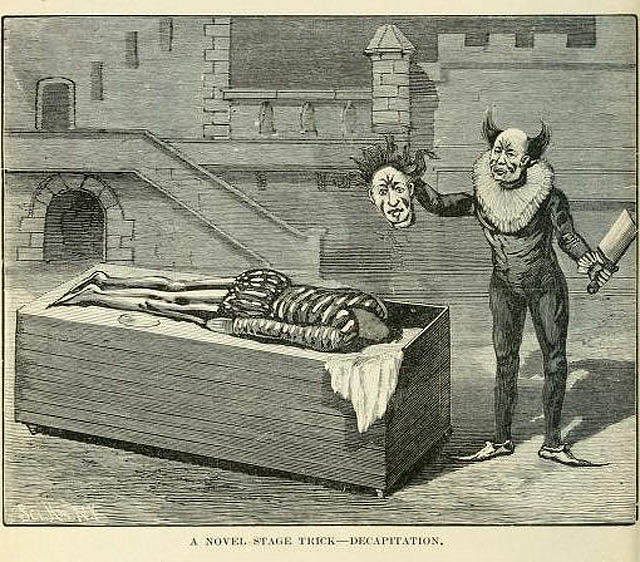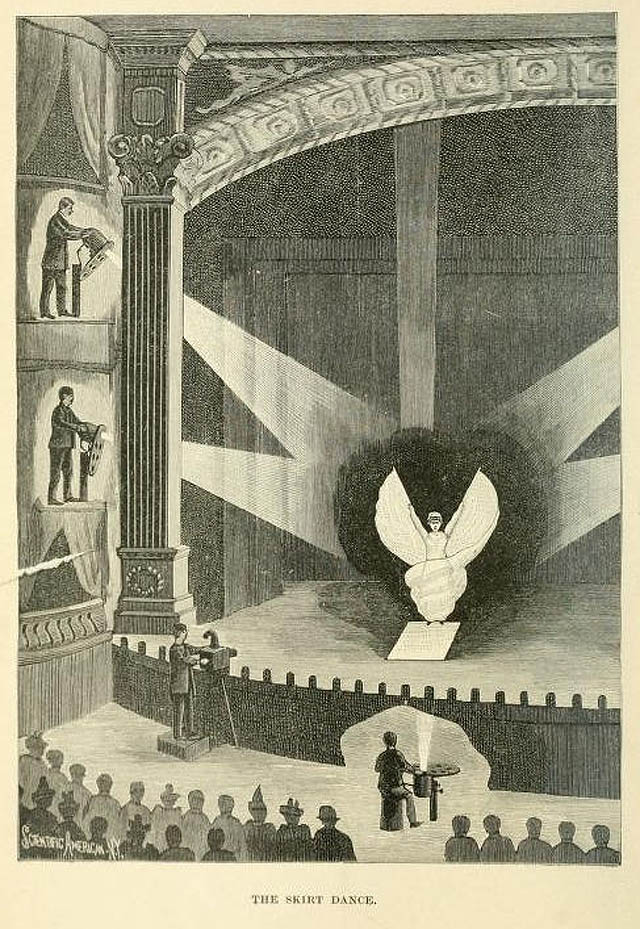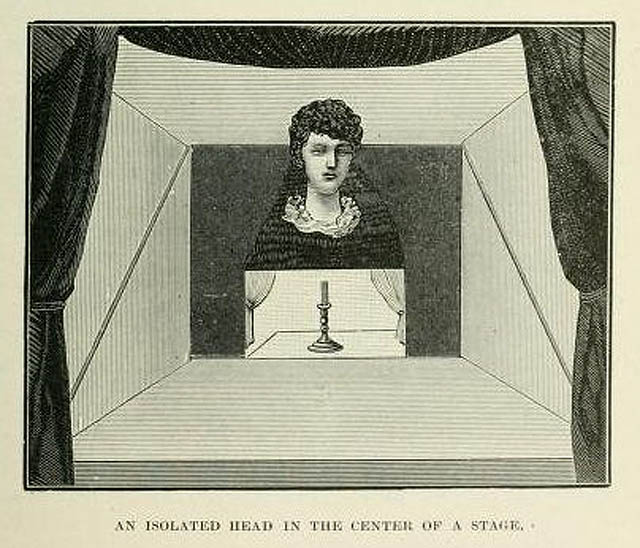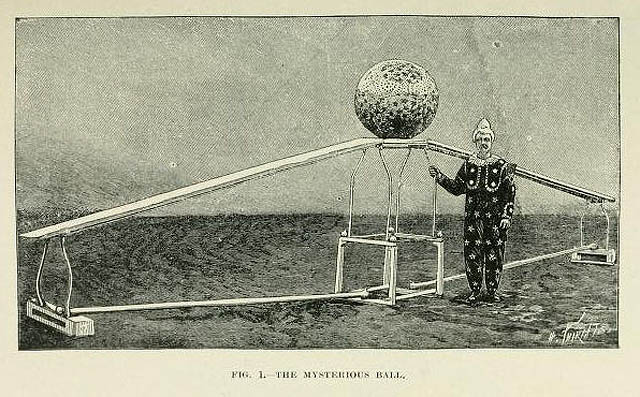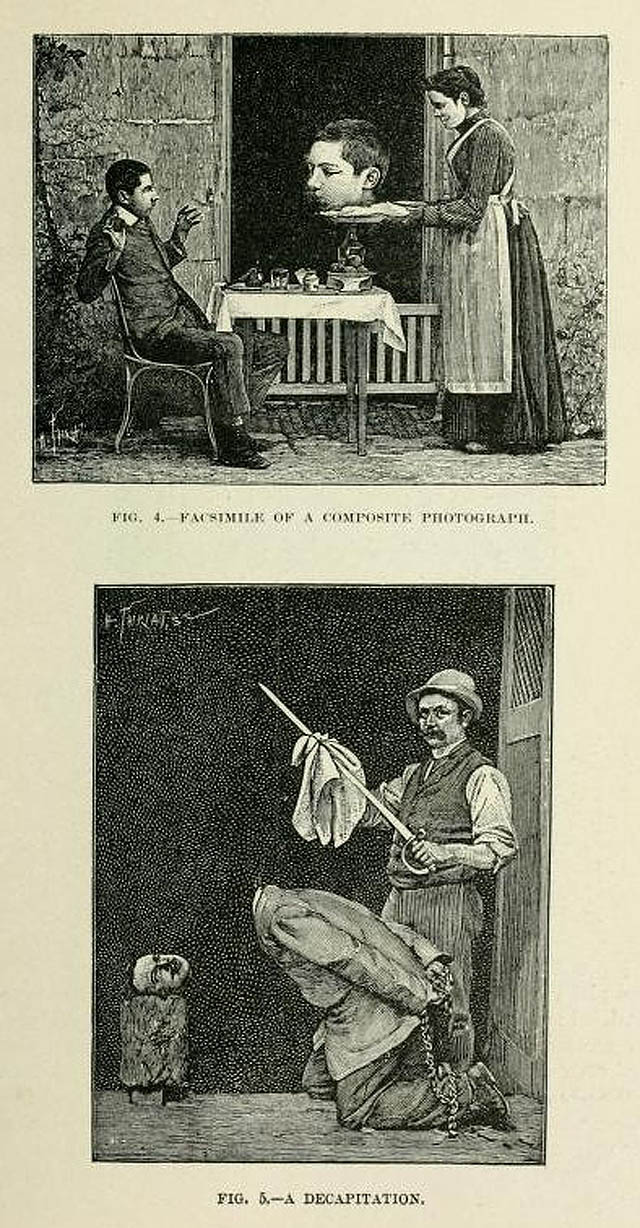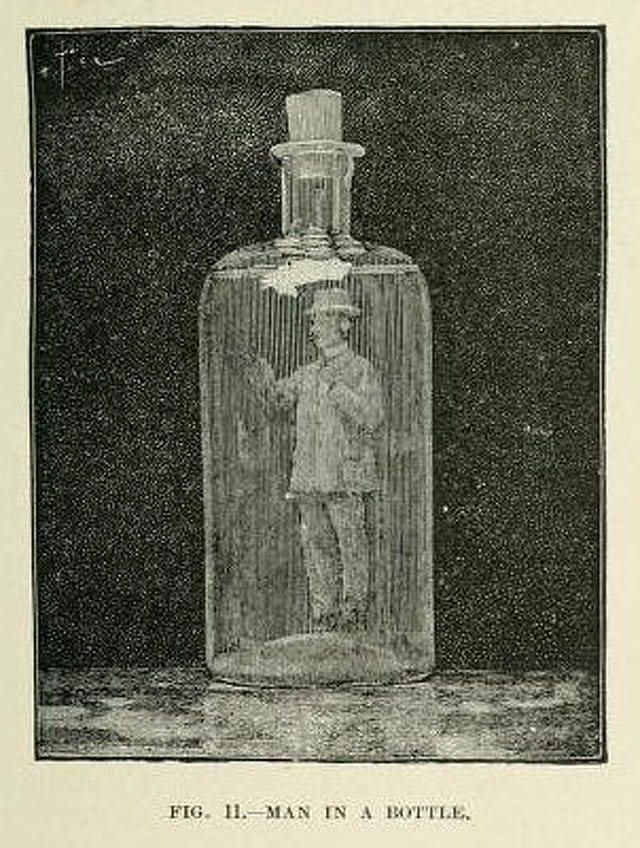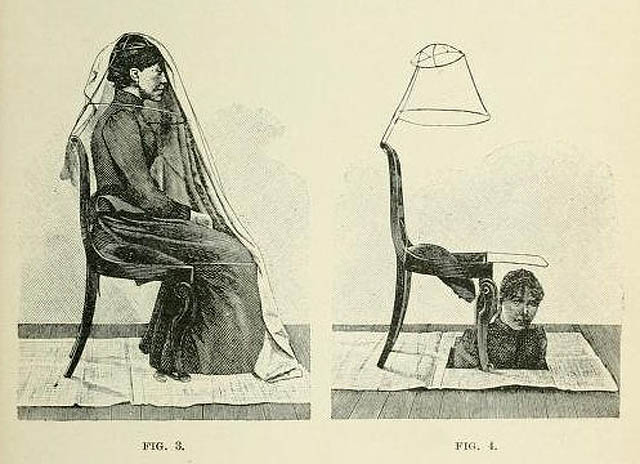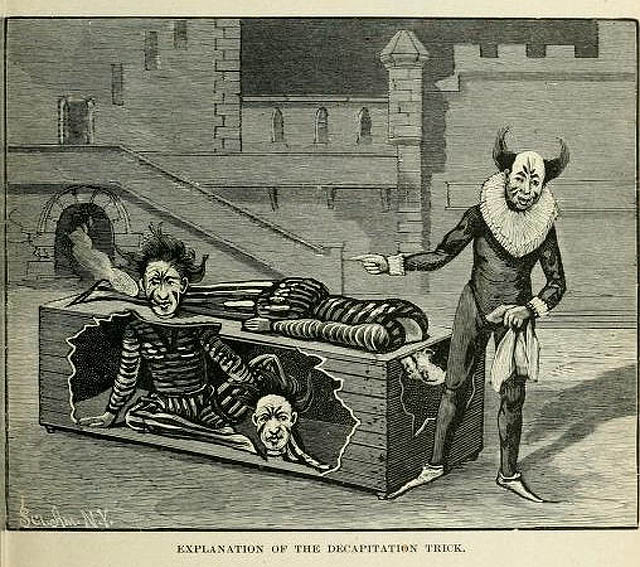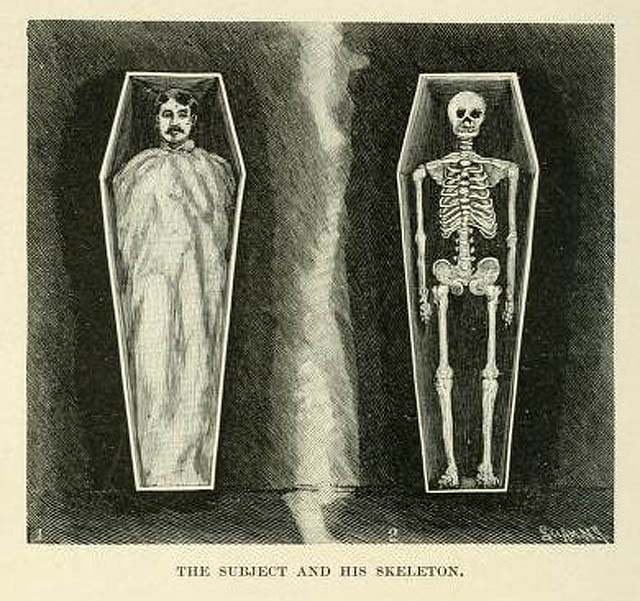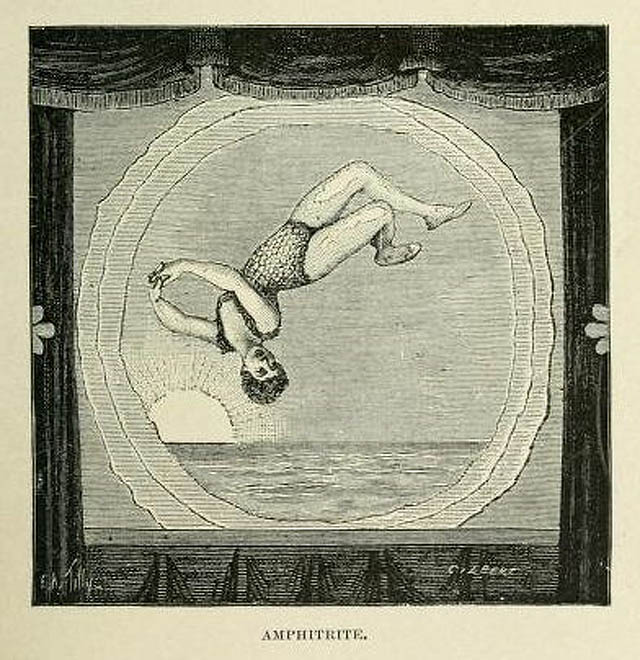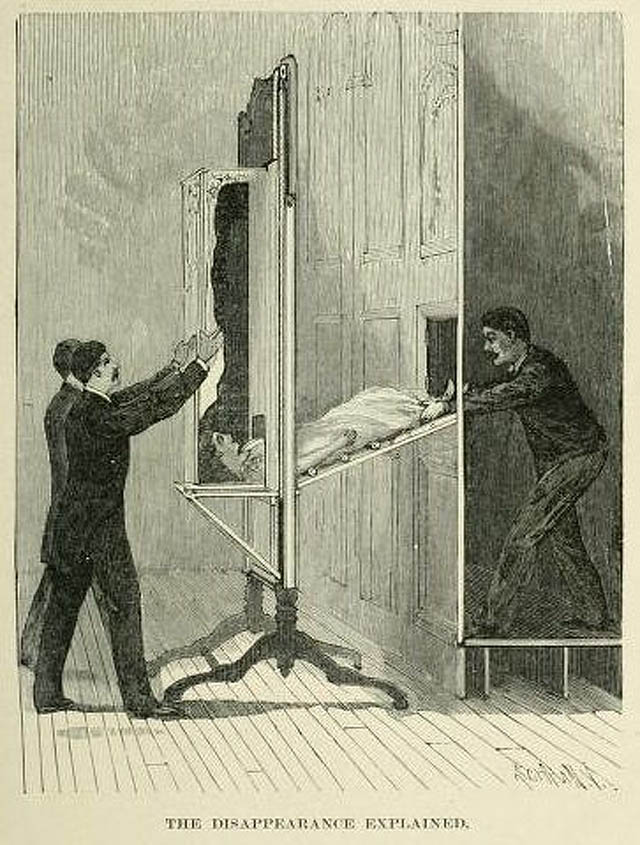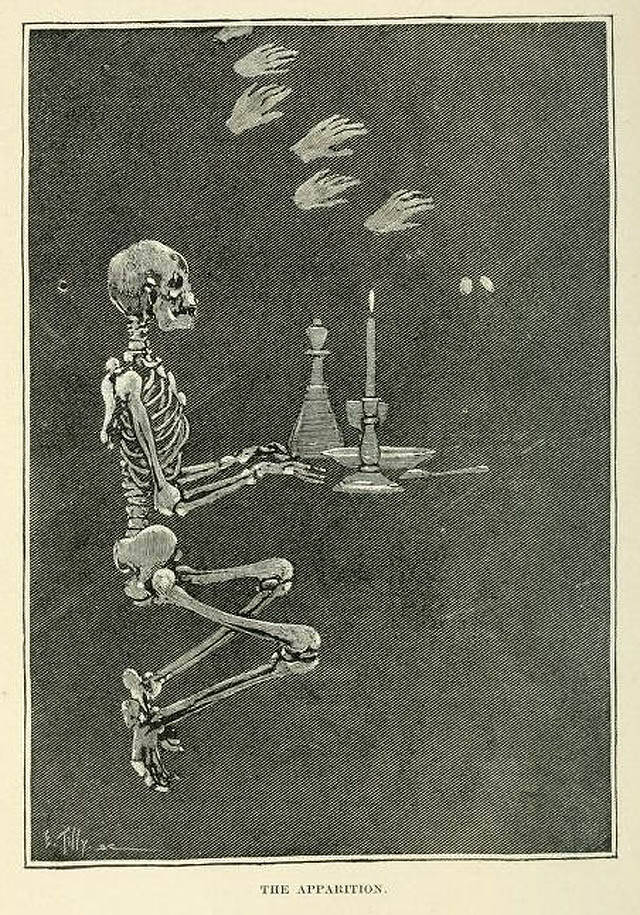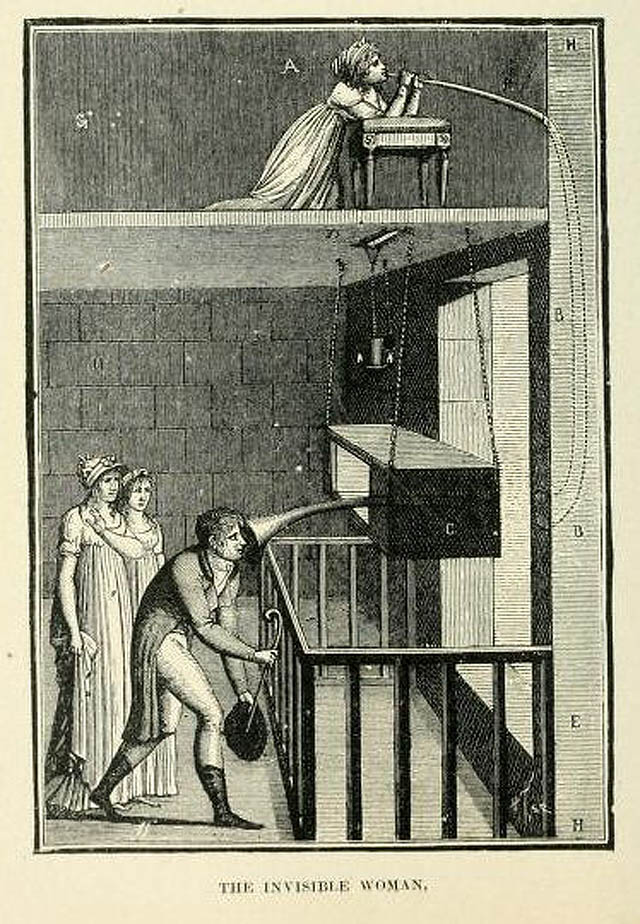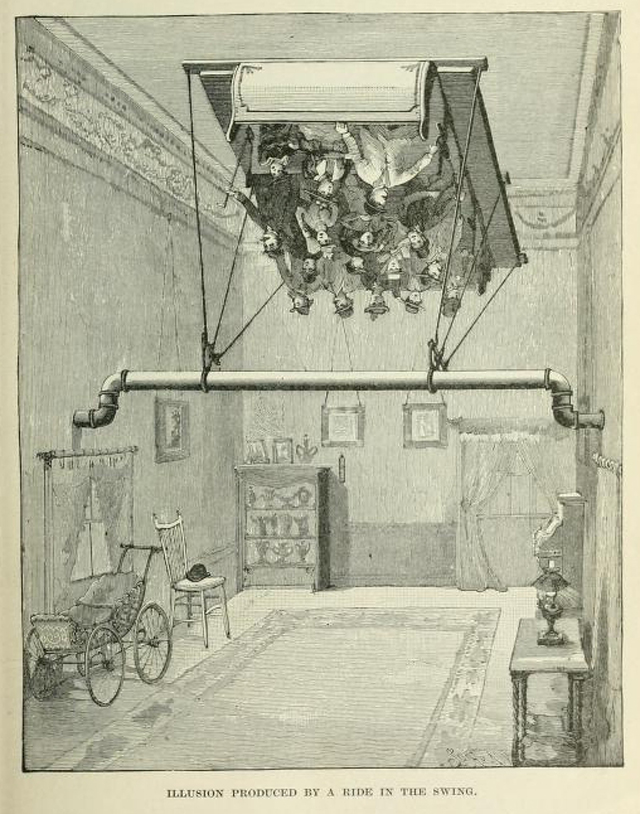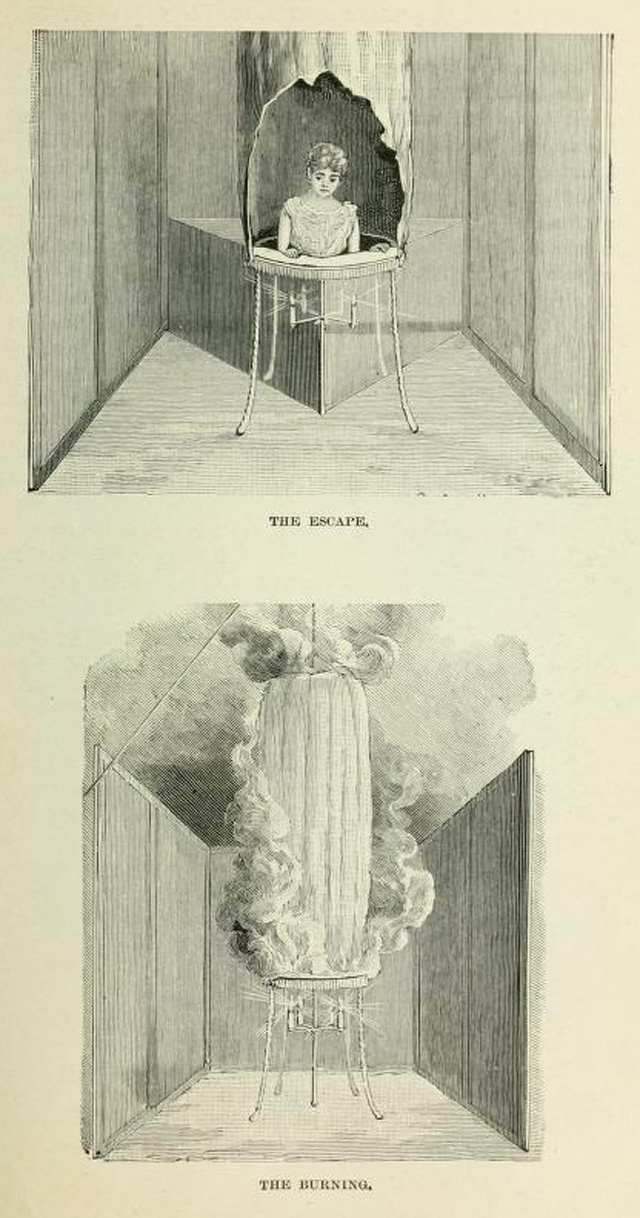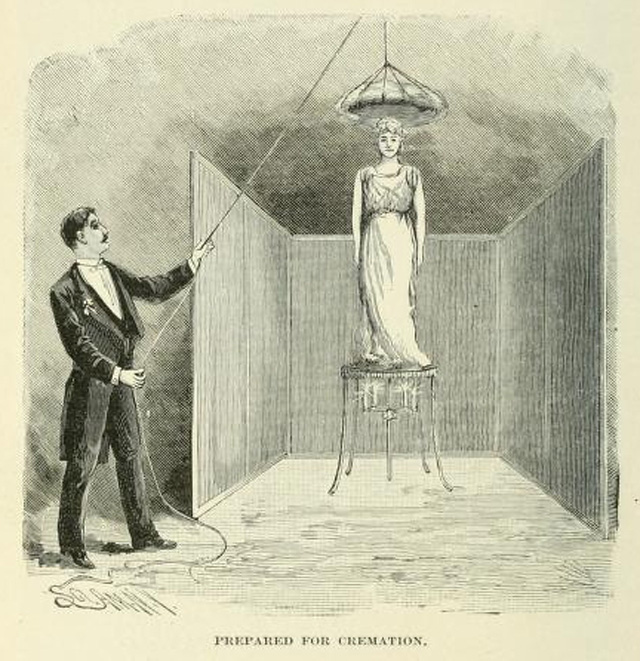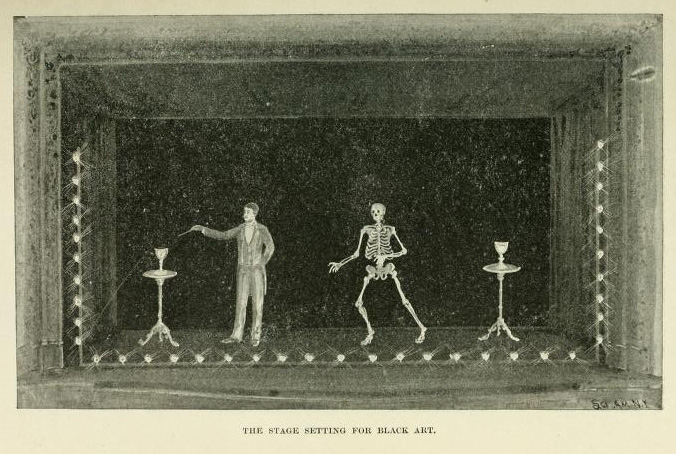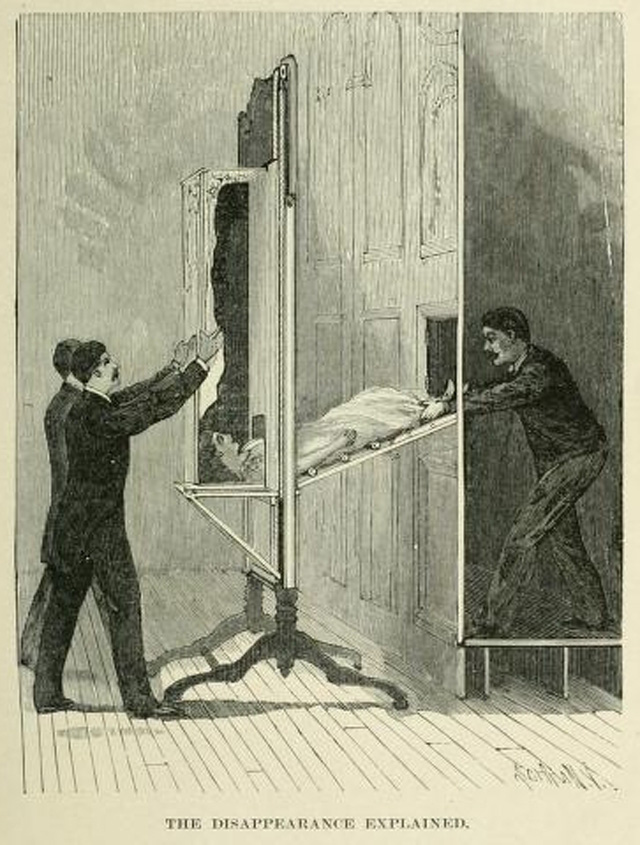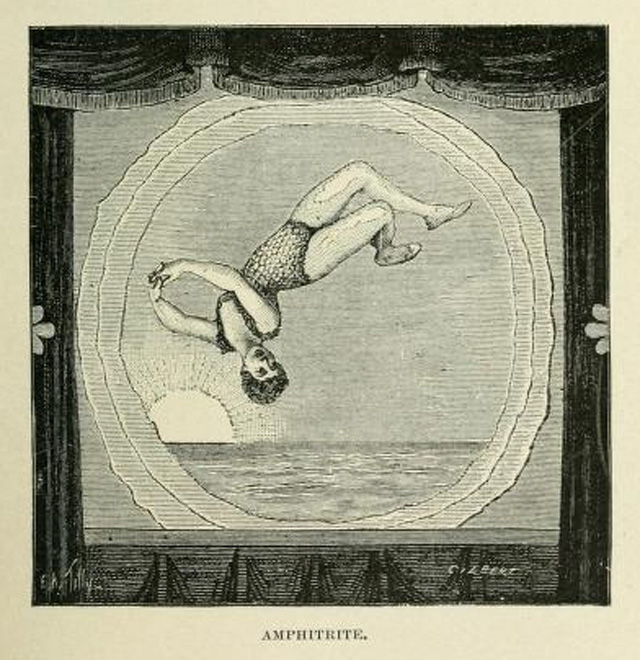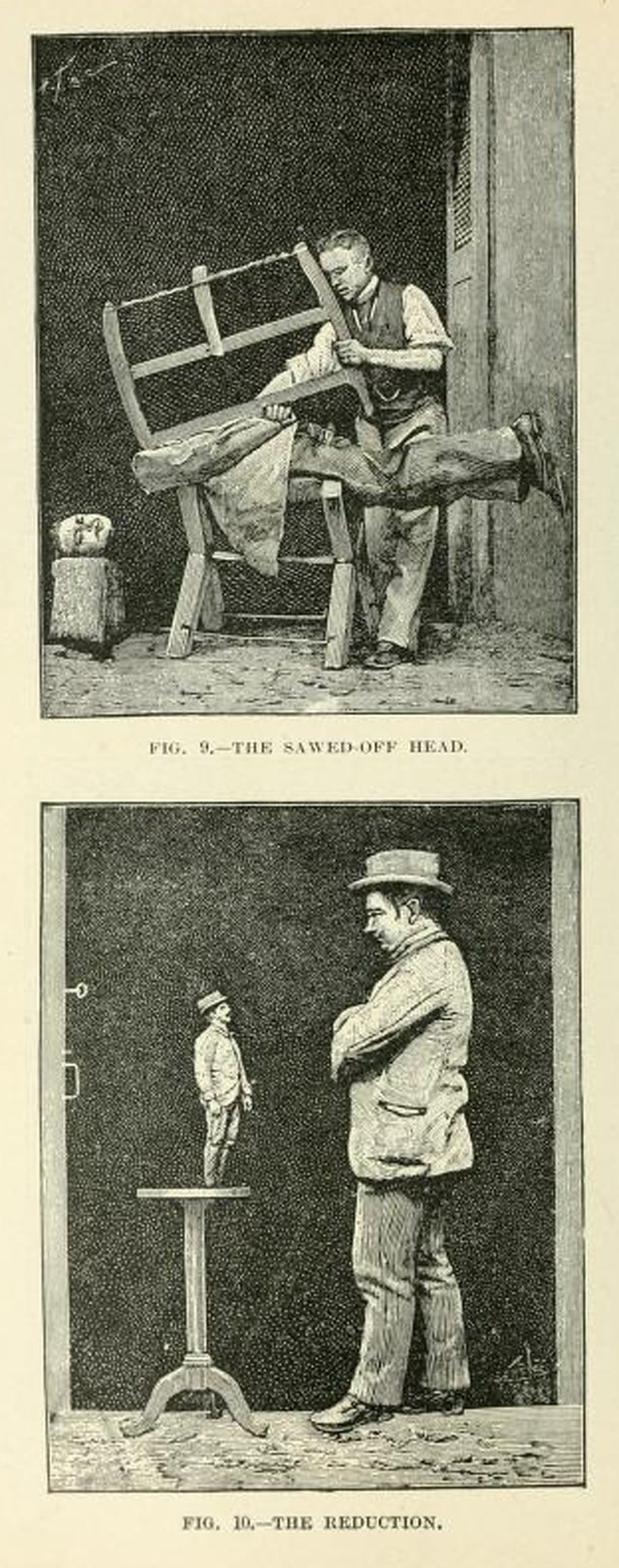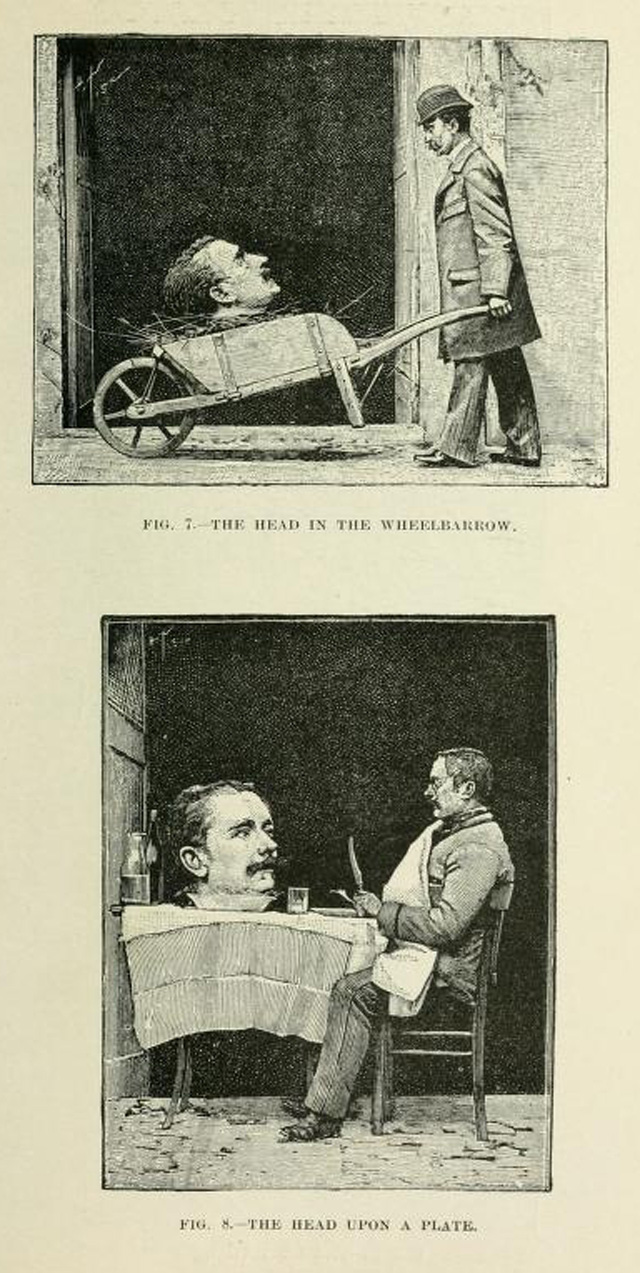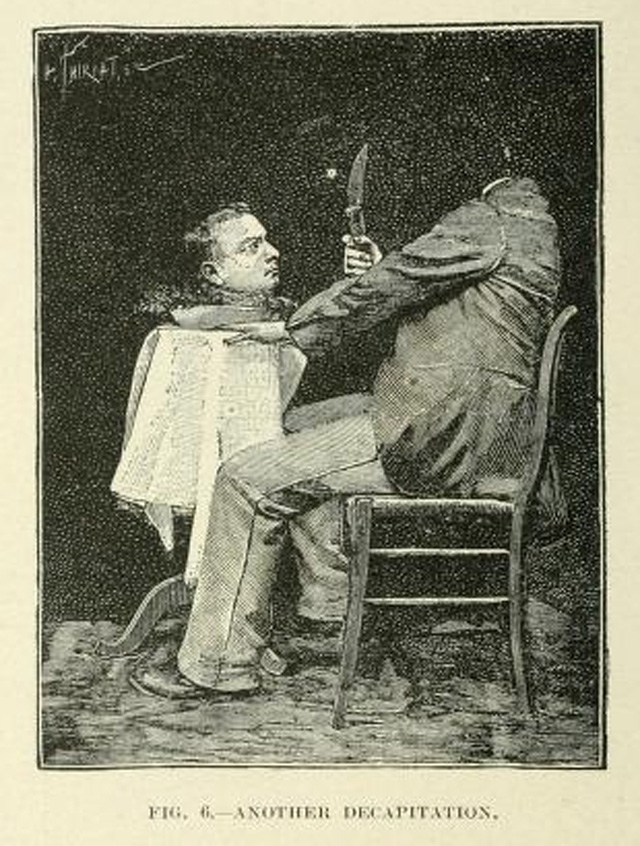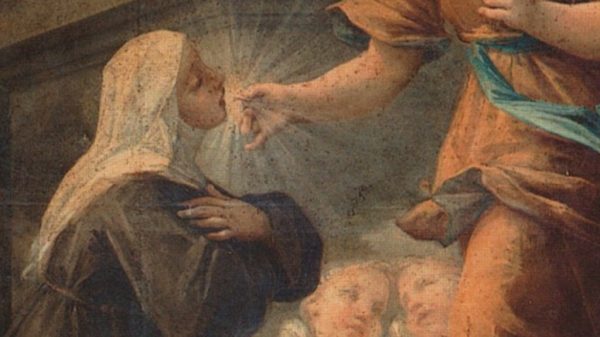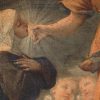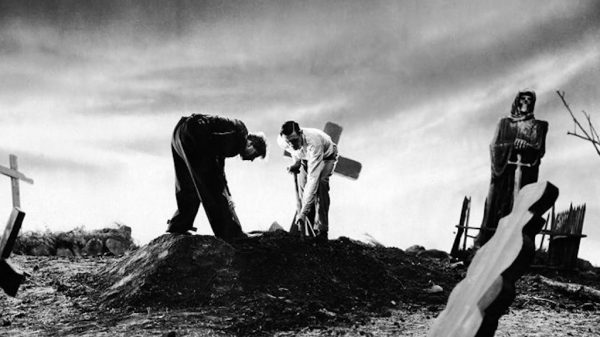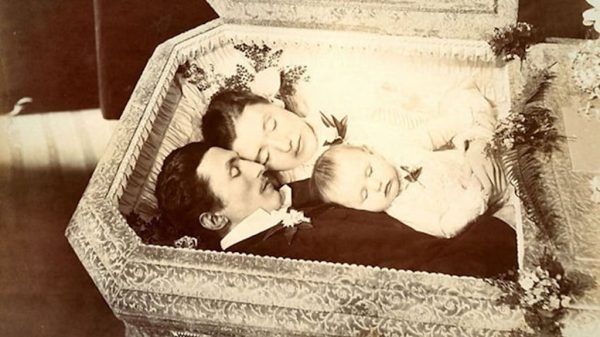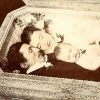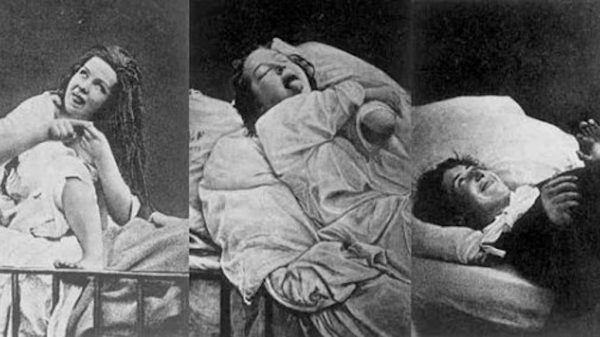During the Victorian Era, Magic and Illusion left the carnival circuit and entered the serious realm of theatre. Stage illusions were the special effects of the time; they awed and amazed the crowd, who were mostly beyond the superstitious at this point, but they also offered a glimpse into an unknown world with endless possibilities. Corpses came back to life and heads were decapitated and reattached – it seems like what the death-obsessed Victorian audience really wanted was to see that it was not final, that life appeared to end but in fact carried on. While today we see resurrection as the realm of zombie and horror flicks, the Victorians saw it as a marvel and a miracle. One tome of illusions is Magic: stage illusions and scientific diversions, including trick photography by Albert A. Hopkins published in 1897, and from the illustrations you can see below, it seems like decapitation was a favorite trick of Victorian magicians and photographers (check out our post on Victorian headless photos here). This book lays out how to achieve these illusions on stage and on film, and you can read it below!
Magic: stage illusions and scientific diversions, including trick photography, compiled and edited by Albert A. Hopkins, with an introduction by Henry Ridgely Evans; 1897; Low, London.

